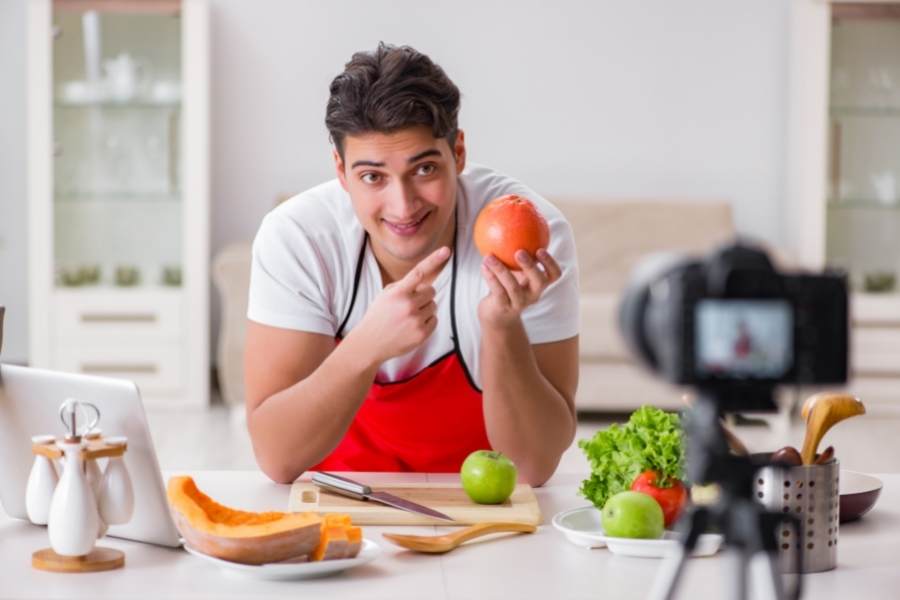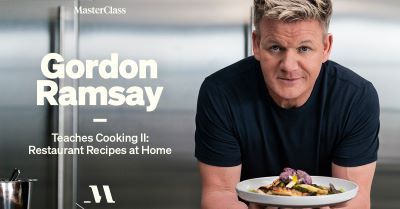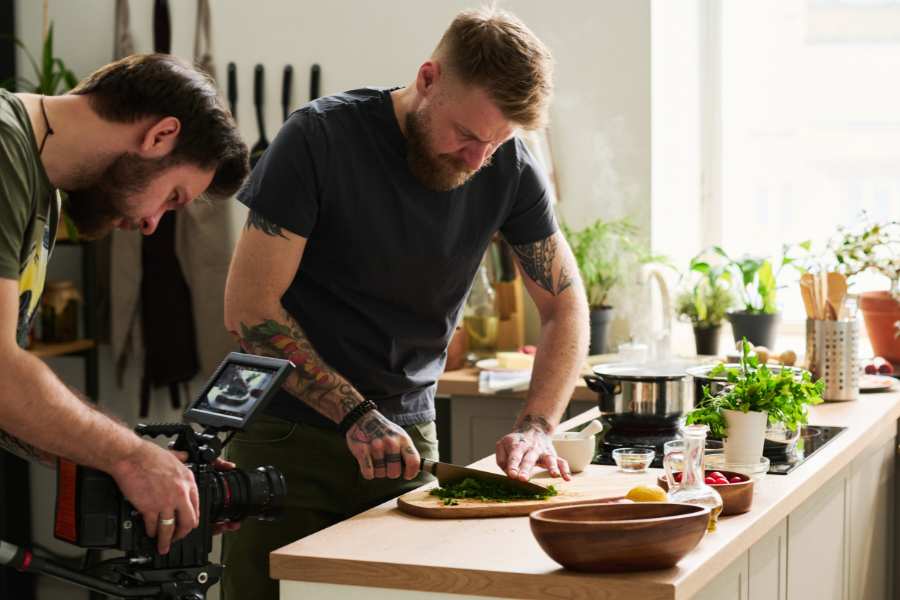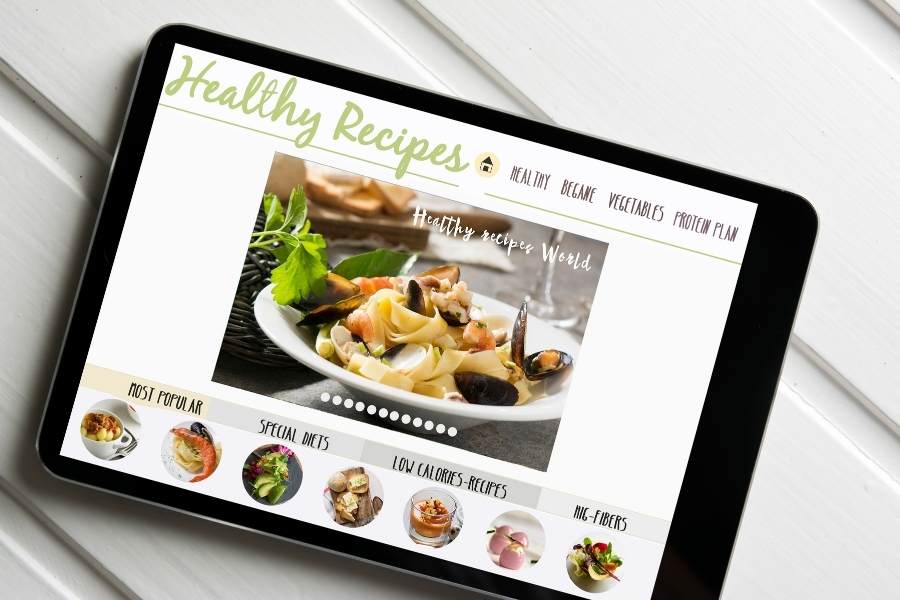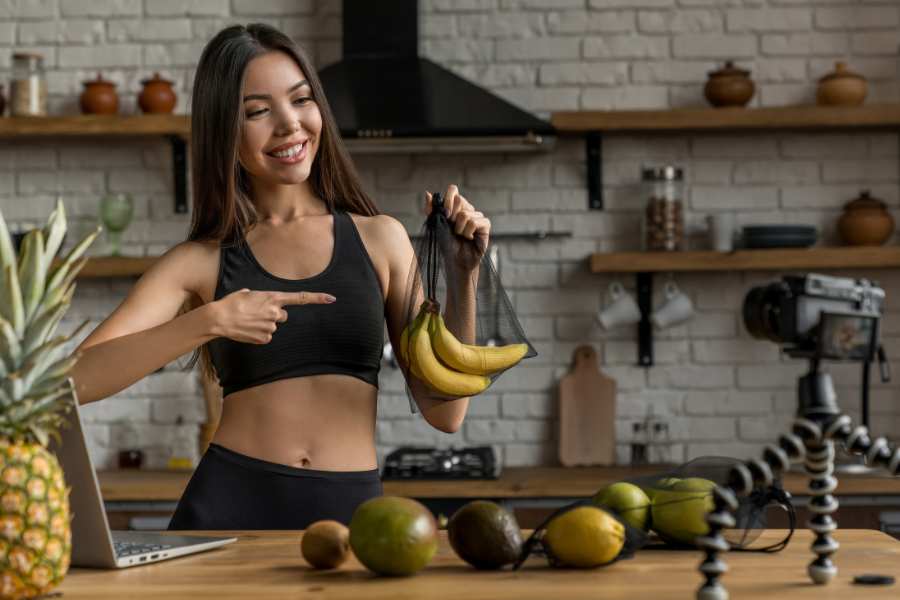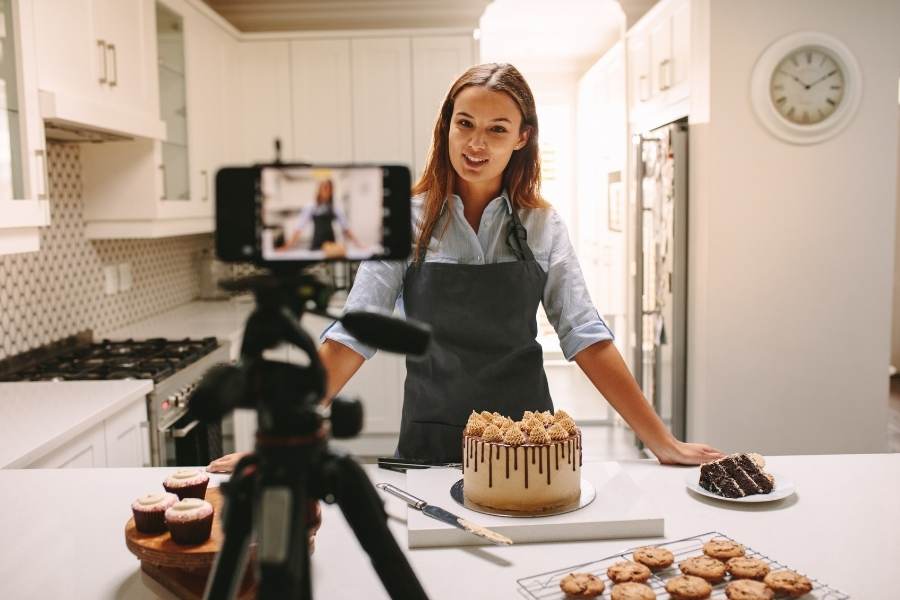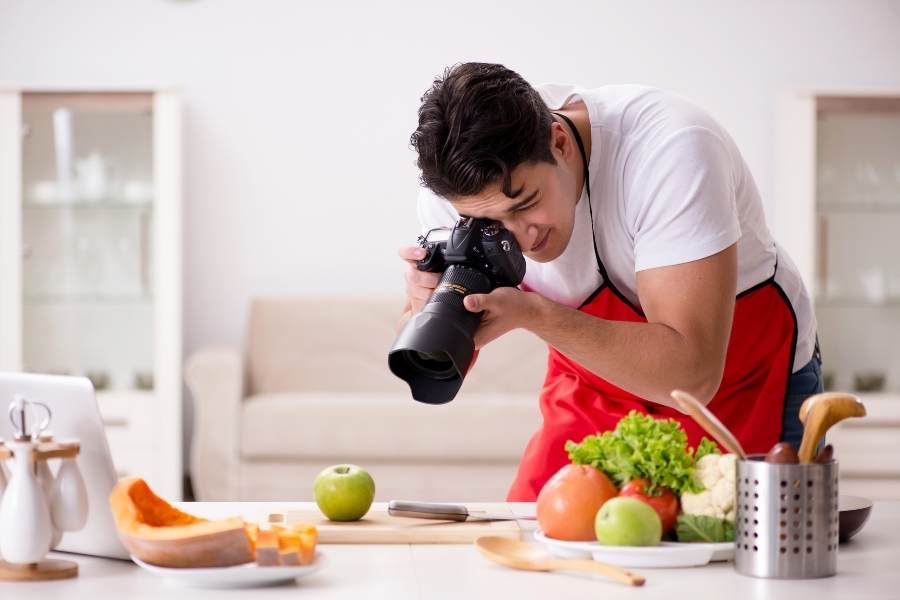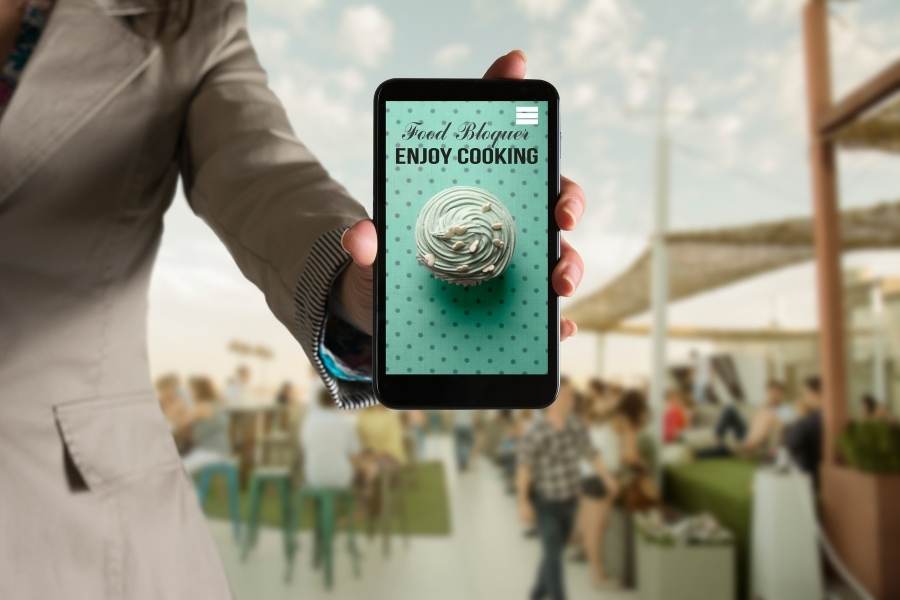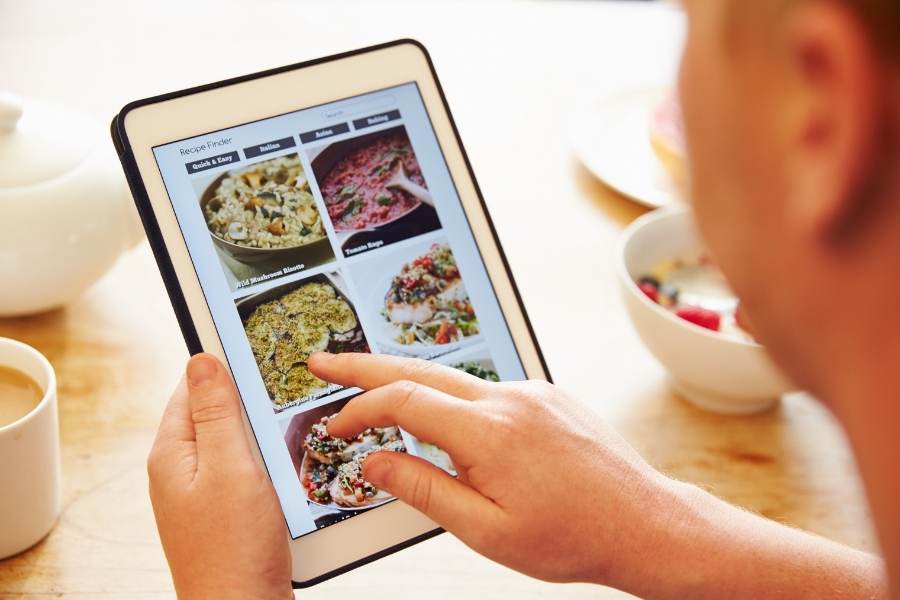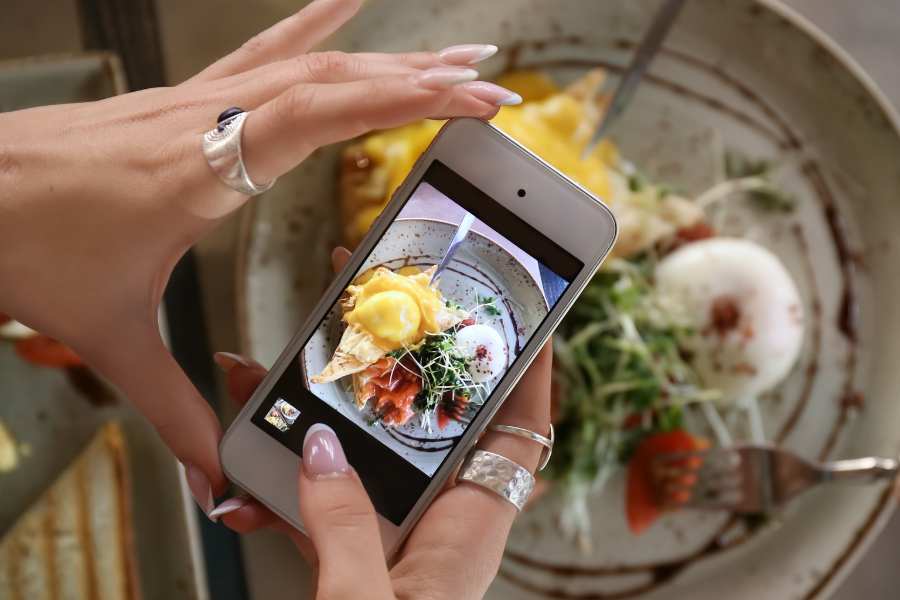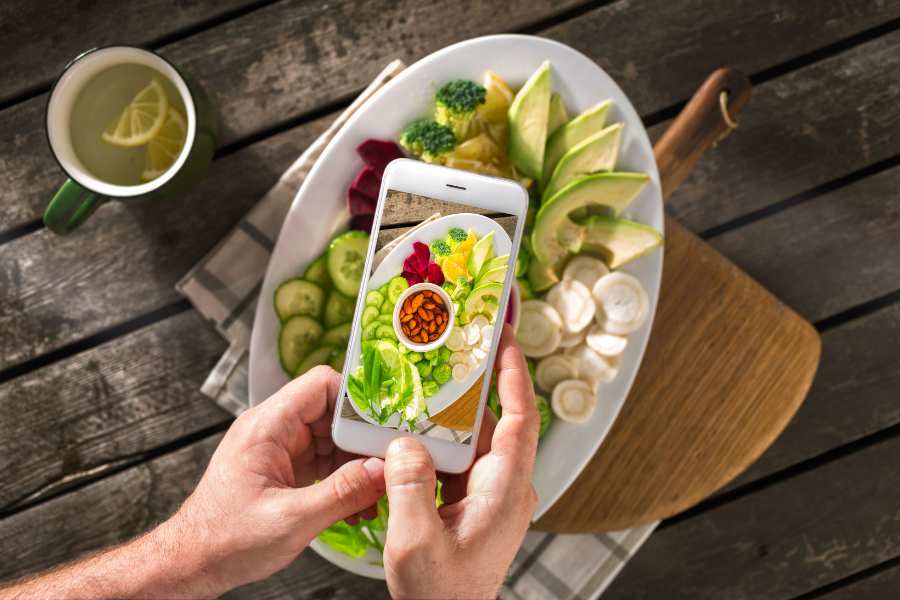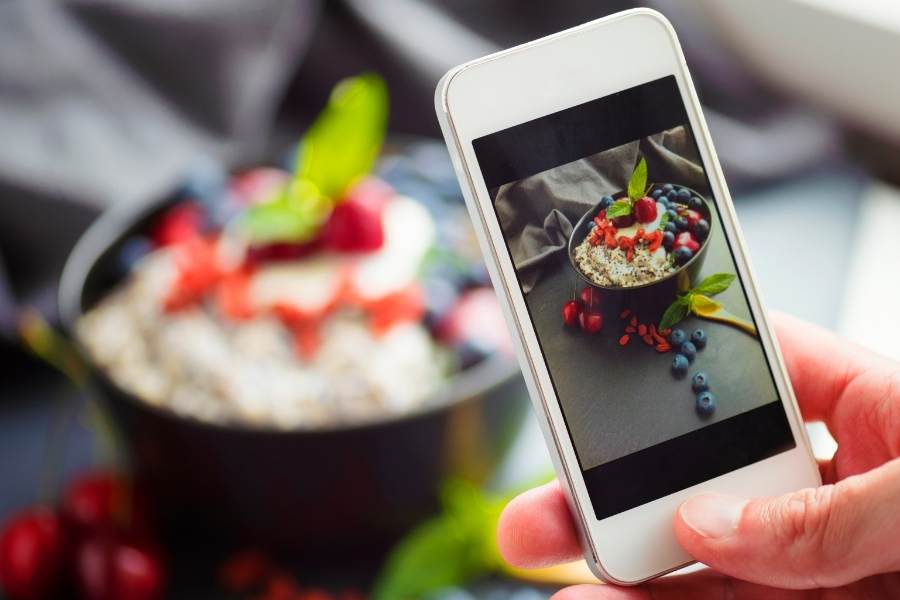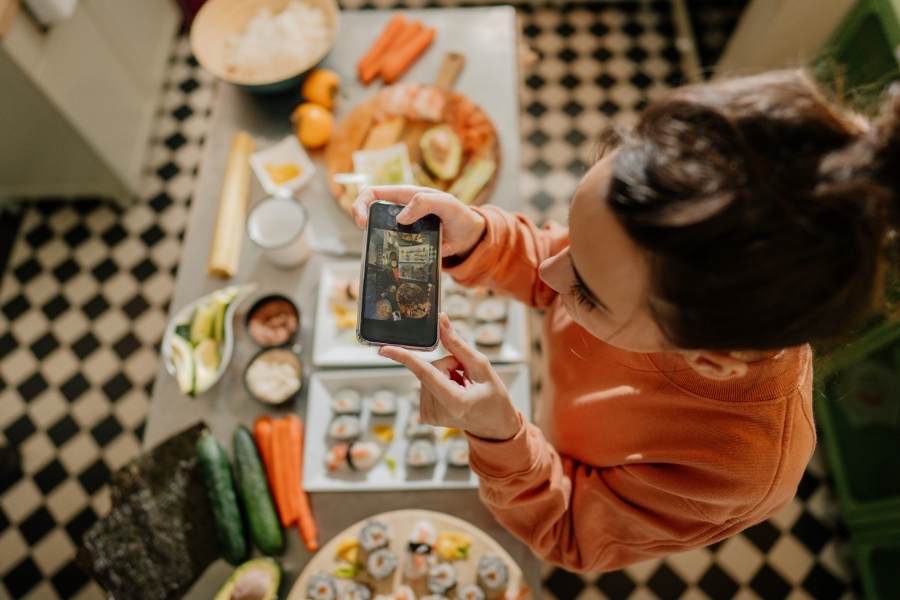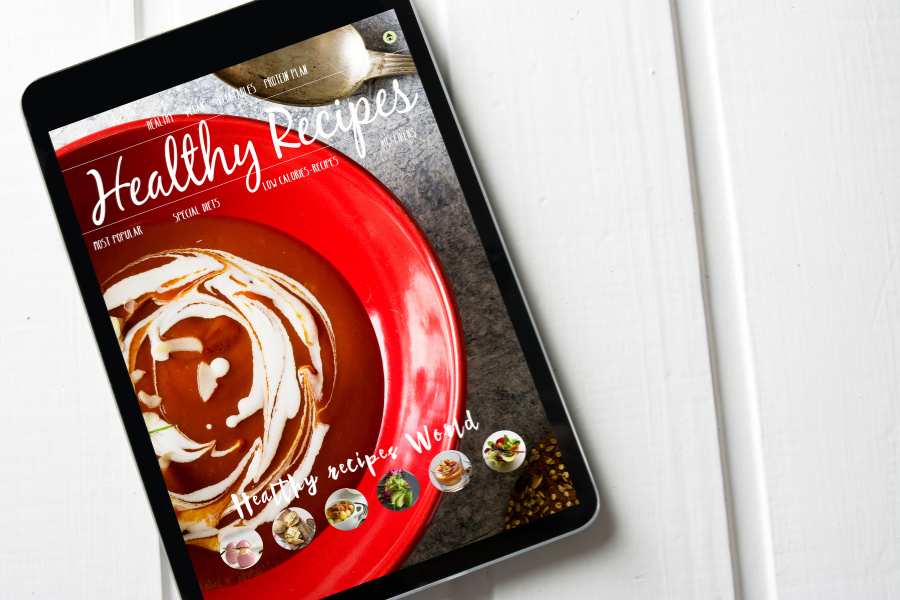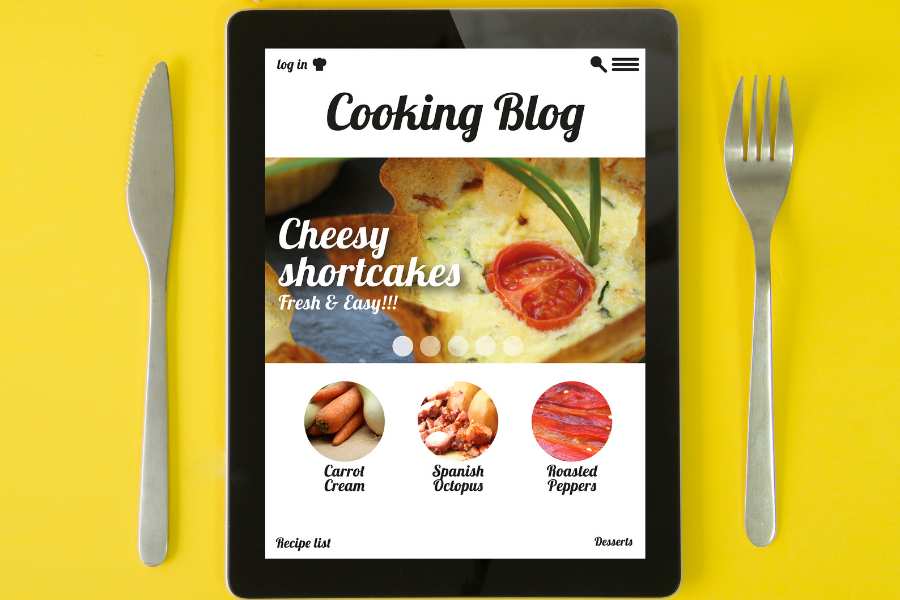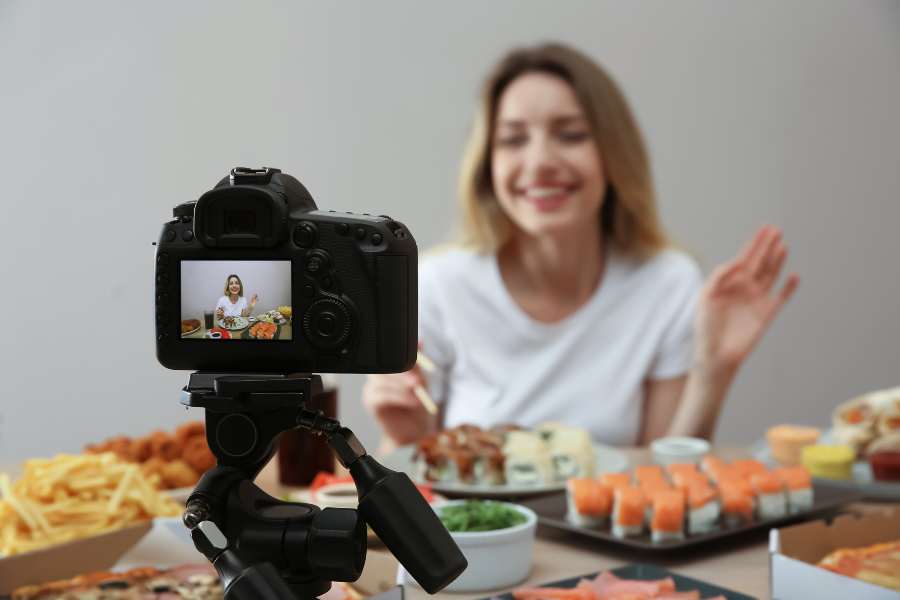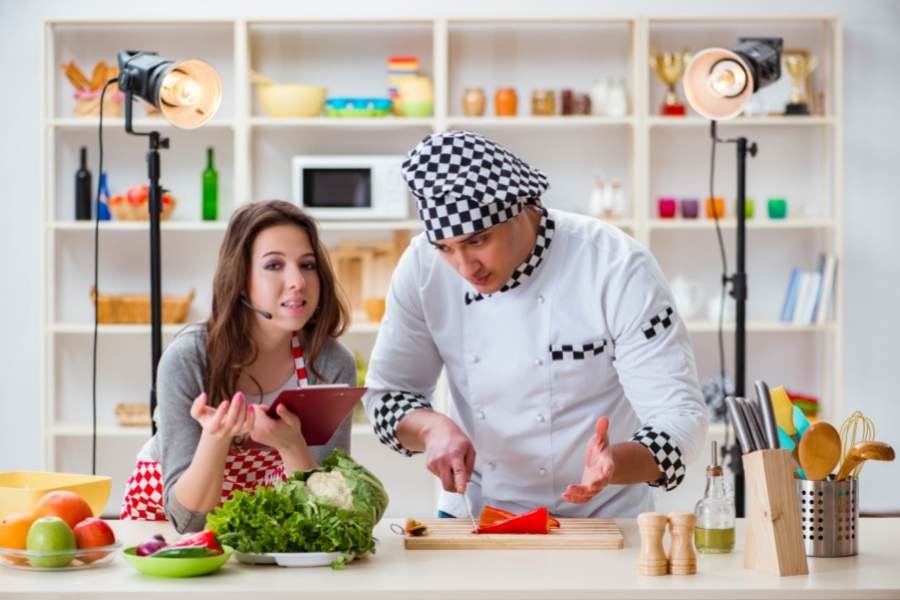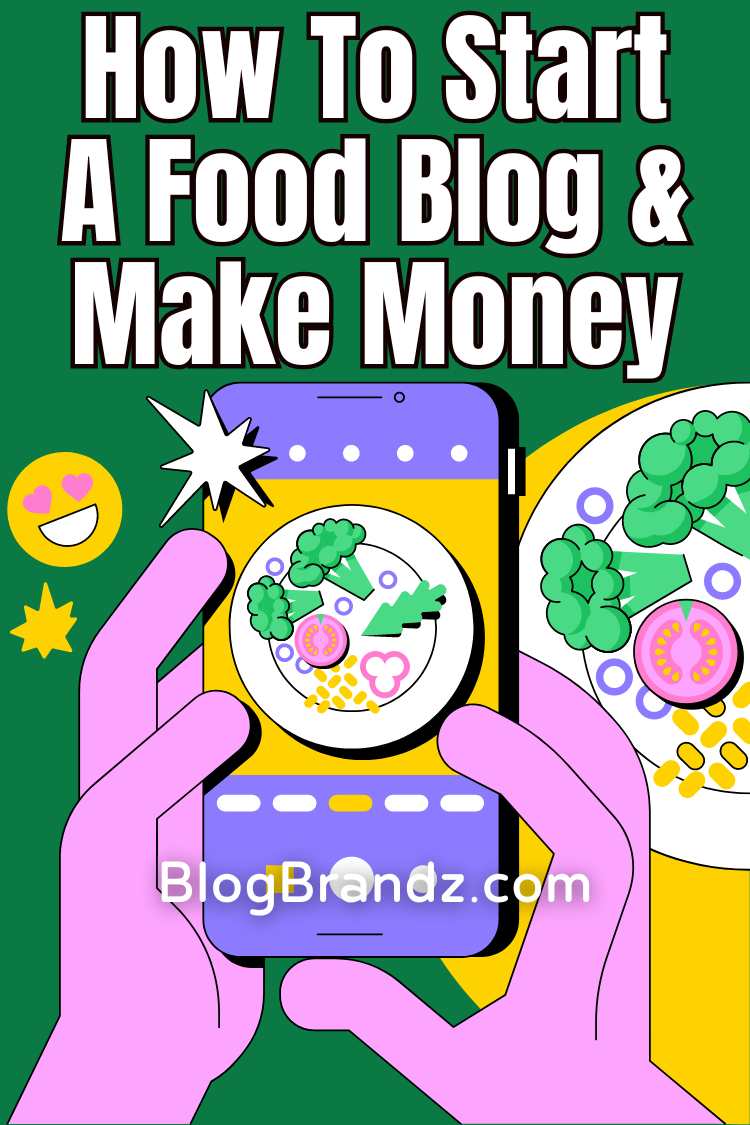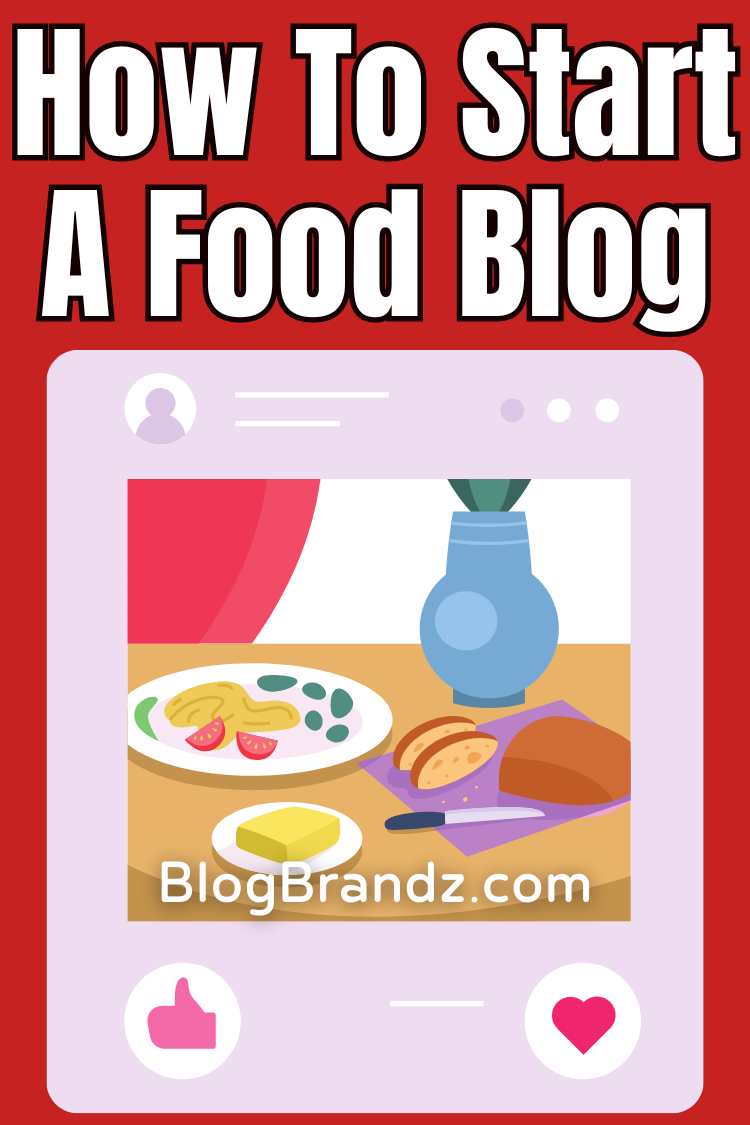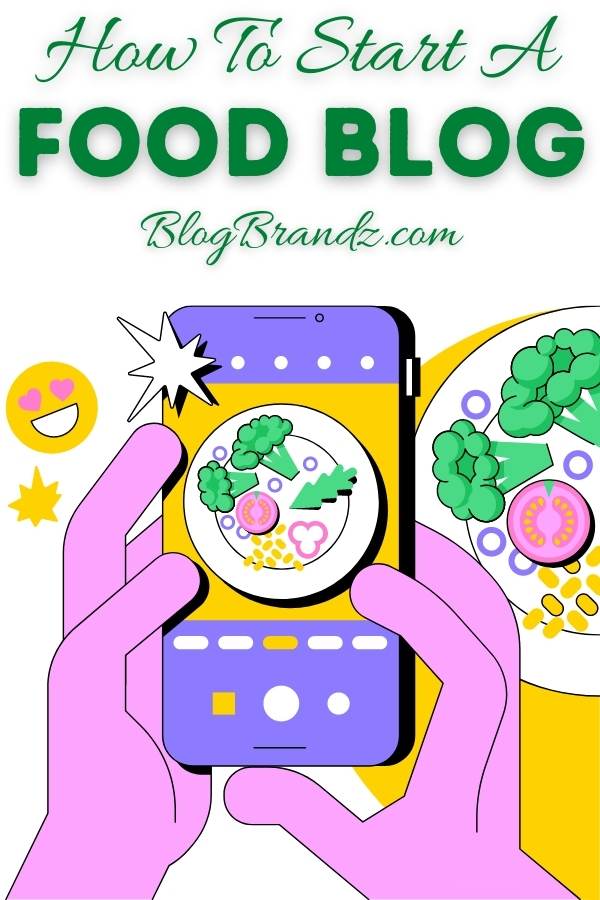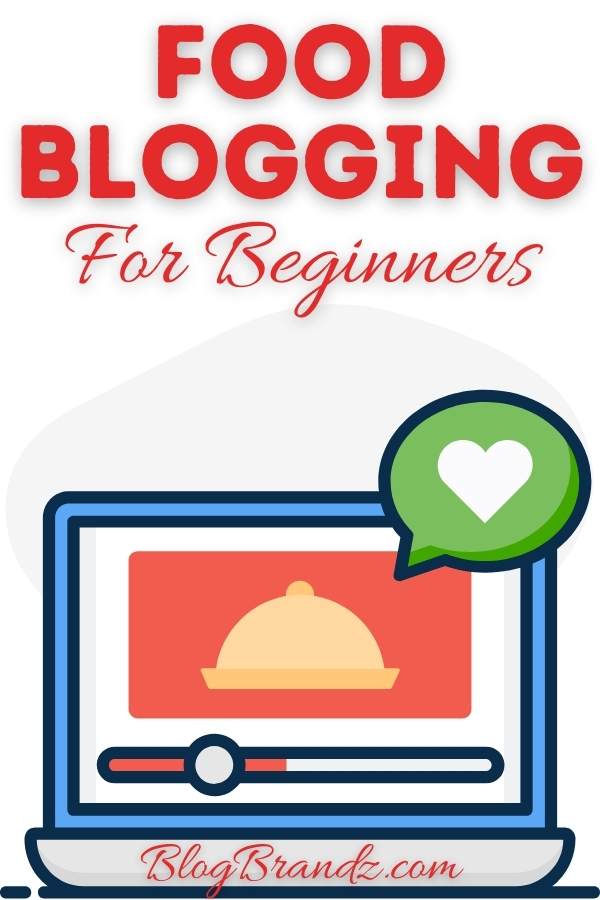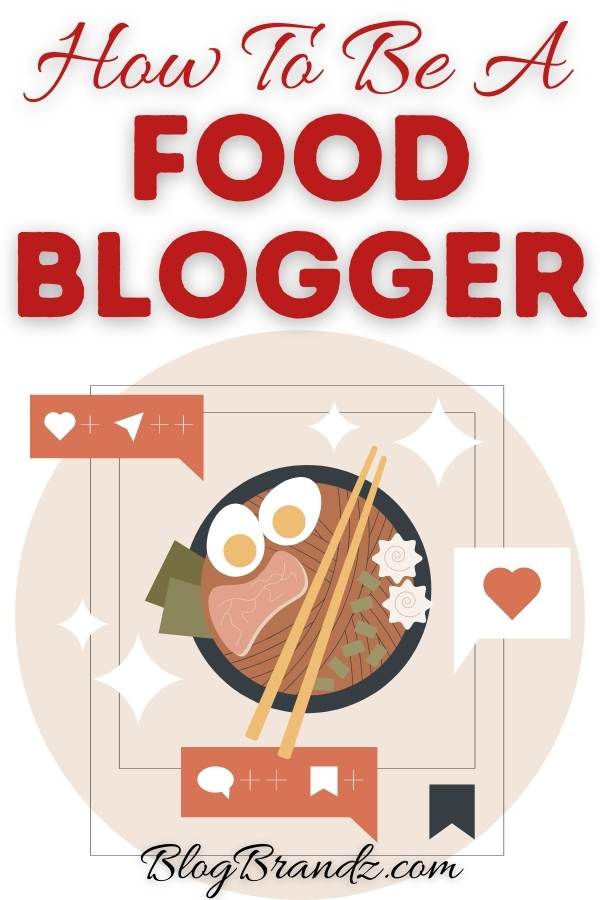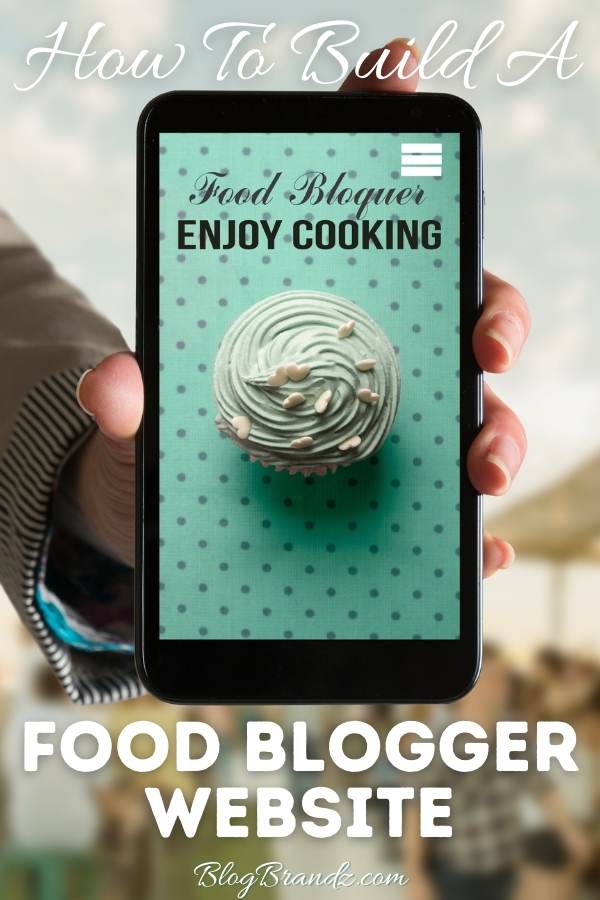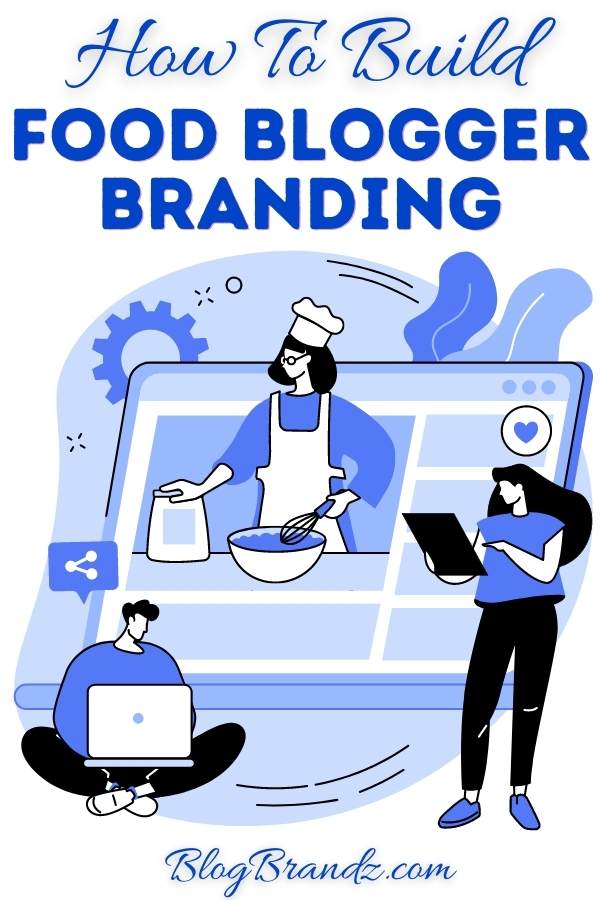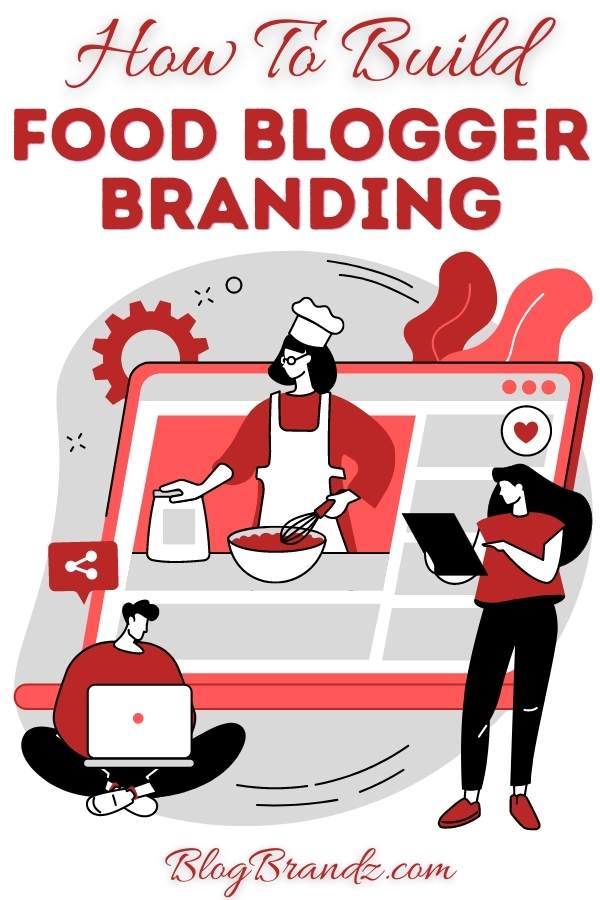
Learn how to start a food blog and make money. Become a food blogger or food writer and build a successful food blog website.
Do you love to cook and share your recipes with others? Do you have a passion for food and cooking? If so, you can learn how to create a food blog and become a food writer or food blogger.
In this article, you’ll get food blogging tips from the pros to help you break into the world of food writing or blogging. We’ll also discuss what it takes to become a successful food blogger and how to monetize your recipe website and brand.
Contents
What is a food blog?
A food blog is a website or online platform where a blogger shares their experiences, recipes, reviews, and stories related to food.
Food bloggers often write about their cooking adventures, dining experiences, favorite ingredients, kitchen tips, and more. They may also share photos and videos of their recipes, along with detailed instructions for readers to recreate them at home.
Food blogs can range from casual and personal to professional and informative, catering to a wide audience interested in cooking, baking, food photography, and culinary exploration.
What’s the difference between a food blogger & food writer?
A food blogger creates and maintains a blog or micro-blog centered around food. Generally speaking, food bloggers write about their personal experiences with food, their own cooking experiences, recipes they’ve tried, restaurants they’ve visited, etc.
A food writer may do any of the above and is likely to write more extensively about food trends, gastronomy, and the history and culture of food. Food writers also review restaurants or write feature stories about various aspects of the food industry.
A food writer may or may not have a blog, but they have a strong understanding of the food industry and their work will likely be published in some form of media, such as a magazine, newspaper, or online publication.
What does a food blogger do?
A food blogger is someone with a passion for food, who enjoys cooking, writing about food, and sharing recipes for food. They may have a blog or website devoted to recipes, restaurant reviews, or simply sharing photos of their latest culinary creations.
To become a successful food blogger, it is important to have excellent food plating and food photography skills and to be able to write well.
Many food bloggers start by creating their own recipes, while others also feature recipes they’ve found elsewhere on the web. They often write reviews of restaurants they’ve visited and share photos of their latest cooking projects.
Food bloggers may also offer tips and advice for novice cooks, or review kitchen gadgets and appliances. Food bloggers also take pictures of their food and post them on their blogs.
Many food bloggers start a cooking vlog where they share videos of themselves cooking and post the videos on their blog, Pinterest, Instagram, and YouTube channels.
Some food bloggers are also food writers or travel and food bloggers who specialize in food and drink and write about culinary events or post restaurant reviews, in addition to cooking tips and recipes.
Most food bloggers are hobbyists who post for the love of writing and cooking, but food bloggers with business skills go on to brand themselves and make a very good living from their blogs.
A lot of people start food blogs as a way to document the recipes that they create, but many food bloggers hope to turn their blogs into businesses.
Is it too late to start a food blog?
Is it too late to start a food blog? Can I become a food blogger and succeed today? That depends on what you want to achieve with your food blog.
If you want to join the ranks of famous food bloggers and influencers, keep in mind that the field of food blogging is somewhat saturated and that you’ll be facing intense competition that makes it hard to stand out unless you’re already well-known in the food industry.
Your chances of success also depend on your writing and photography skills. That said, if you’re passionate about food and cooking, it’s never too late to start a food blog. In fact, many successful food bloggers started their blogs in their golden years.
If you’re just starting out and your primary aim is to share your recipes and cooking experiences with friends and family, then there’s no reason why you can’t start a food blog today.
The key to success is to have a clear vision for your blog, be passionate about food, and have the drive to keep blogging even when things get tough and success seems elusive.
The most important thing is that your blog is well-written, easy to navigate, and has interesting and original content. You should also focus on creating high-quality photographs that capture the essence of your recipes.
Have a clear idea of what you want your cooking or recipe blog to be about, and make sure that you’re putting in the work, time, and effort necessary to create quality content that people will want to read.
Also, be open to changing your focus as you learn and grow. Bloggers often start out with one focus and then discover they have more than one passion, or that their old passion is now outdated and they need to pivot to stay relevant.
If you’re interested in becoming a food writer or blogger, there are online courses, books, and even food blogging podcasts that will teach you the basics of food writing and blogging.
It can take time for food recipe websites to gain traction online, but the most important thing is to get started and keep learning as you go. With dedication and hard work, you can achieve your goals and become a successful food writer and food blogger.
So if you’re interested in starting a food blog, go for it! Just make sure you do your research and put in the work to make your blog successful.
How to become a food blogger
You can learn how to start a food blog and get paid by understanding the steps you must take to get started in food blogging and increase your chances of success.
#1. Pick the right niche
Figure out your voice and blogging niche. What do you want to write about? There are so many food blog ideas – from recipes to restaurant reviews to cooking tips and baking blogs.
Study the top food blogs for ideas and inspiration. Narrow down your niche to a specific focus around which you can create interesting and unique content. Choose a niche that you’re passionate about or enjoy learning about.
Here are some popular niches for food bloggers:
- Healthy Eating and Recipes: Focus on nutritious, balanced meals, dietary restrictions (like vegan, gluten-free, etc.), and recipes that promote wellness.
- Ethnic Cuisine: Explore specific cuisines from around the world, offering authentic recipes, cultural insights, and tips on where to find ingredients.
- Baking and Desserts: Share recipes for cakes, cookies, pastries, and other sweet treats, along with baking tips, decorating ideas, and tutorials.
- Local Food and Restaurants: Highlight local eateries, food markets, and regional specialties, sharing reviews, recommendations, and insider tips.
- Meal Prep and Planning: Provide strategies for meal planning, batch cooking, and prepping ahead, along with recipes tailored for busy individuals and families.
- Food Photography and Styling: Offer tips and tutorials on food photography techniques, styling tricks, and editing tools to help other bloggers improve their visual content.
- Budget-Friendly Cooking: Share recipes and tips for cooking delicious meals on a budget, including cost-saving ingredients and meal-planning strategies.
- Gourmet and Fine Dining: Explore upscale dining experiences, gourmet ingredients, and high-end recipes, catering to foodies with refined tastes.
- Food and Travel: Combine a love for food with travel adventures, sharing culinary experiences from different regions, countries, and cultures.
- DIY and Homemade Ingredients: Teach readers how to make pantry staples from scratch, such as bread, pasta, sauces, and condiments, along with creative ways to use them in recipes.
Choose a niche that aligns with your passion and expertise, and don’t be afraid to experiment with different food blog ideas and evolve as you grow your blog.
Whether you want to create a vegan blog, an Indian food blog, or a baking blog, there are so many different aspects of food and nutrition you can blog about, that it shouldn’t be hard to find one that interests you the most.
#2. Learn food blog photography & videography
Food blogs are all about creating beautiful and delicious-looking recipes. This free eBook on taking viral food photos will help you put your best foot forward when styling and photographing your dishes.
Get creative with your writing and photography because when it comes to food, we “eat with our eyes,” and the quality of your food styling and photography will determine the quality of your content.
In this free guide to food photography mastery, you’ll discover expert tips and techniques that will elevate your novice food photos to dazzling masterpieces.
Creating stunning food photos for your blog can make your content more engaging and appealing to readers. Here are some tips to help you achieve spectacular food photos:
- Natural Light: Use natural light whenever possible, as it tends to be more flattering and brings out the natural colors of the food. Avoid harsh, direct sunlight, which can create harsh shadows. Instead, look for soft, diffused light, such as near a window or outdoors in the shade.
- Composition: Pay attention to the composition of your photos. Use the rule of thirds to create a balanced and visually appealing image. Experiment with different angles, such as overhead shots, 45-degree angles, or close-ups, to find the most flattering perspective for your dish.
- Props and Styling: Choose props and styling elements that complement your dish and help tell a story. Use minimalistic backgrounds and props to keep the focus on the food. Consider using fresh herbs, spices, or utensils related to the recipe to add interest to the photo.
- Color and Contrast: Aim for vibrant, appetizing colors in your photos. Use colorful ingredients and garnishes to enhance the visual appeal of the dish. Pay attention to the contrast between the food and the background to make the dish stand out.
- Depth of Field: Use a shallow depth of field (low f-stop) to create a blurred background (bokeh) that draws attention to the photo’s main subject. This can help create a more professional and visually appealing look.
- Focus and Sharpness: Ensure that your main subject is in sharp focus. Use manual focus or focus lock on your camera or smartphone to ensure that the food is the focal point of the image.
- Angles and Perspectives: Experiment with different angles and perspectives to find the most flattering view of your dish. Try shooting from above, from the side, or at a 45-degree angle to add visual interest.
- Editing: Use photo editing software or apps to enhance your photos. Adjust the brightness, contrast, and colors to make the food look more appetizing. Be careful not to over-edit, as this can make the photo look unnatural.
- Consistency: Maintain a consistent style and aesthetic across your food photos to create a cohesive look for your blog. This can help establish your brand and make your blog more recognizable to readers.
- Practice and Experiment: Like any skill, food photography takes practice. Don’t be afraid to experiment with different techniques, styles, and settings to find what works best for you.
Here are some food photography courses that will help you learn these skills quickly:
- Food Photography From Beginner to Pro: A Complete Guide
- Food Videography Masterclass: Complete Guide for Beginners
- Food Photography: How to Photograph Food Using Natural Light
- Food Styling Tips and Techniques for Beginners
- Food Photography and Post-production in Photoshop
Making recipe videos for your blog posts takes a lot of work. If you can take your existing content and repurpose it differently, it will allow you to reach more people without doing more work.
Here are some more ways to get off the content hamster wheel and increase website traffic and visitors without creating new content.
#3. Create food-related blog content
To attract readers and potential sponsors for your food blog, ensure your blog posts are well-written, informative, and full of helpful tips and advice.
One of the best ways to get trending food blog content ideas is to check out Pinterest Predicts, a “not-yet-trending report” where Pinterest tries to identify the searches and topics that will be trending in the new year.
Here are some more ways to get inspiration and generate exciting ideas for your food blog:
- Personal Experience: Share your favorite recipes, cooking tips, and food-related stories from your own life. Your personal experiences can provide a unique and authentic perspective for your blog.
- Seasonal Ingredients: Highlight seasonal ingredients and recipes that are relevant to the current time of year. This can help keep your content fresh and relevant to your audience.
- Trending Topics: Stay up-to-date with food trends and popular topics in the food industry. You can create content around trending ingredients, cooking techniques, or food-related events.
- Recipe Roundups: Curate a list of recipes around a specific theme, such as “10 Comforting Soup Recipes for Fall” or “15 Delicious Vegan Desserts.” This can provide value to your readers and help them discover new recipes.
- Cookbook Reviews: Introduce your audience to new cookbooks and authors by reviewing cookbooks that you love and sharing your favorite recipes from them (with your own unique twist to avoid copyright infringement).
- Interviews and Features: Interview chefs, food bloggers, or other food enthusiasts and share their stories, recipes, and tips on your blog.
- Local Food and Restaurants: Explore your local food scene and share reviews, recommendations, and stories about local restaurants, markets, and food events.
- Food History and Culture: Dive into the history and cultural significance of different foods and recipes. Share interesting facts, stories, and recipes from around the world.
- Ingredient Spotlights: Focus on a specific ingredient and share multiple recipes that feature that ingredient. This can help readers learn new ways to use familiar ingredients.
- Reader Requests: Ask your readers what they’d like to see on your blog and use their suggestions as inspiration for your content.
- Seasonal Holidays and Events: Create content around holidays, festivals, and other seasonal events. Share recipes, decorating ideas, and tips for celebrating.
- DIY Projects: Share DIY projects related to food, such as homemade spice blends, pickles, or flavored oils.
- Food Photography Tips: Share tips and tutorials on food photography, styling, and editing. This can help other food bloggers improve their photography skills.
- Guest Posts: Invite guest bloggers to contribute to your blog. This can bring fresh perspectives and new ideas to your content.
- Q&A Sessions: Host Q&A sessions with your readers or other food experts. This can help you understand your audience better and provide content that meets their needs and interests.
Try to find a unique perspective or voice, and make sure your posts are well-written, SEO-optimized, and easy to understand. Learn how to do SEO for your food blog and your YouTube recipe channel, so you can leverage the content you create to build traffic.
This SEO Copywriting Course will teach you how to master SEO copywriting and start driving high-quality traffic to your site and maximize your conversions.
This course on How to Create a Content Calendar will help you stay on top of your food blog posting schedule and maintain consistency for your readers.
#4. Build your food blog website
One of the first things you need to do to become a food writer or blogger is to create a food blog site. This will give you a platform to share your recipes, cooking tips, and thoughts on food with the world.
Your food blog website is your home base and the first impression people will have of your brand, so create a beautiful and user-friendly website.
Make sure your food blog site looks professional and showcases your food blog brand and personality, but don’t waste too much time overthinking which is the best WordPress theme for food blogs.
You can download free WordPress food blog themes, like this Foodie Blog WordPress theme, and install it through your WordPress dashboard to get your food blog up and running.
When building a food blog website, there are several considerations to keep in mind to ensure it is user-friendly, visually appealing, and optimized for search engines. Here are some key considerations:
- Clear Navigation: Ensure that your website has clear and intuitive navigation menus that make it easy for visitors to find what they’re looking for. Organize your content into categories and use descriptive labels for your menu items.
- Mobile Responsiveness: With more people accessing websites on mobile devices, your website must be mobile responsive. This means that it should adapt to different screen sizes and devices for a seamless user experience.
- Visual Appeal: Use high-quality images and graphics to make your website visually appealing. Showcase your food photography prominently and use a clean and attractive design that reflects your brand.
- Fast Loading Speed: Ensure your food blog website loads quickly and looks good on all devices. This can improve user experience and help with SEO rankings.
- SEO Optimization: Implement SEO best practices to improve your food blog’s visibility in search engines. Use relevant keywords in your content, meta tags, and image alt text, and create high-quality, relevant content that is valuable to your audience.
- Social Media Integration: Make it easy for visitors to share your content on social media by including social sharing buttons on your website. Also, integrate your social media profiles into your website to encourage engagement and grow your following.
- Legal Compliance: Ensure that your food blog complies with relevant laws and regulations, such as GDPR for data protection and disclosure requirements for sponsored content.
By considering these factors, you can create a food blog website that attracts and engages your audience and helps you achieve your goals. If you need help customizing your food recipe website, hire a freelance website designer to help you make it look how you want.
#5. Build a mailing list or app
Building a mailing list as a food blogger is the key to staying connected with your audience and growing your blog income. Learn how to do email marketing with low-cost email marketing services to build a list without overspending.
The best way to build an email list is by offering a lead magnet in exchange for visitors’ email addresses. This can help you stay connected with your audience and promote new content or products.
Here are some things you can do to grow your mailing list as a food blogger:
- Create interesting and valuable lead magnets that your website visitors will want to sign up for. You can offer free downloads, such as exclusive recipes or cooking tips, in exchange for email addresses.
- Use a good email marketing service like ConvertKit, that makes it easy to collect email addresses from your readers and send out newsletters or other types of automated emails.
- Add an opt-in form on your blog’s homepage and every other page on your site. Make sure the form is easy to find and prominent, and that readers know exactly what they’re signing up for (news, recipes, etc).
- Add a checkbox in the comments section and ask readers to sign up for your mailing list when they leave comments on your blog posts.
- Promote your lead magnets on social media. Share the link to your landing pages on Facebook, Twitter, and Instagram.
- Use an exit popup promoting your lead magnets to capture leads before they leave your website.
- Include a call to action in every blog post and social media post.
As an alternative, or in addition to a mailing list, creating a recipe web app for your food recipe blog or YouTube recipe channel is a great way to stay in touch and keep your followers and subscribers up to date with your latest food recipe promotions.
With the no-code AppPresser membership mobile app builder, you can protect your content, allow users to register and log in, and integrate your membership plugin so app users see only what they can.
#6. Build your brand on social media
Suppose you want to be a food influencer who attracts brand sponsorships. In that case, you must build your food blog branding, online presence, and community on social media platforms like Instagram, Pinterest, Facebook, TikTok, Twitter, and other emerging platforms.
This free eBook from Food Blogger Pro will show you which social media platform you should use to promote your food blog and what creative ways you can use to reach your audience across all social media platforms.
Tailwind is a smart marketing assistant that will help you automate your social media designs, scheduling, and analytics. It will transform your food blog photos into hundreds of optimized, personalized designs for Instagram, Facebook, and Pinterest.
Tailwind Create will help you create scroll-stopping Pins, schedule Pins with super-smart, time-saving power-up features, find and join Pinterest Communities to reach new audiences, and see what’s working at a glance with the Pinterest analytics reports.
In this article on food photography tips, you’ll learn some tips and tricks that you can implement to take your beginner food photos into full-blown stunners.
Learn how to get social media content ideas for engaging social media posts so you can boost your social media engagement and branding.
Use these influencer marketing platforms to connect with and build relationships with other food bloggers, food influencers, chefs, and food businesses in the industry.
Figure out how to offer value to these food influencers and start a cold email outreach campaign to approach them for collaborations. This is a great way to build your food blogger branding and grow your credibility as a food expert.
#7. Leverage Pinterest to drive traffic
Pinterest’s nature as a visual search engine makes it an ideal platform for food bloggers. Unlike traditional search engines that rely heavily on text, Pinterest allows users to discover content through visually engaging images.
This is perfect for food bloggers, as food is inherently visual, and high-quality images of dishes can attract and captivate users. Additionally, Pinterest’s search functionality is tailored for visual exploration.
Users can search for recipes, meal ideas, or specific ingredients and instantly find a plethora of visually appealing pins. This makes it easier for food bloggers to reach a wider audience and drive traffic to their blogs.
By leveraging Pinterest, food bloggers can drive traffic to their food blog sites, increase brand visibility, and engage with a highly targeted audience. To effectively use Pinterest, create visually appealing pins that showcase your recipes or food-related content.
Using relevant keywords and hashtags can help pins reach a wider audience. Join Pinterest group boards and collaborate with other pinners to expand your reach.
Pinterest’s algorithm prioritizes fresh and relevant content, making it a dynamic platform for food bloggers to showcase their latest recipes and ideas. Consistent pinning and engaging with the Pinterest community are key to building a strong presence and driving traffic to your food blog.
By consistently sharing visually appealing content and optimizing their pins with relevant keywords, food bloggers can increase their visibility and grow their audience on Pinterest.
Here are some Pinterest courses for bloggers to help you get more traffic from Pinterest:
#8. Become a food blogger on Instagram
You can learn how to become a food blogger on Instagram and get paid by mastering the art of creating mouthwatering content and engaging with your audience.
Depending on your individual skills, experience, and blog niche, these Instagram growth hacking tips will help you learn how to become a food blogger on Instagram:
- Creating beautiful and eye-catching food photos. Make sure that your photos are well-lit, and properly composed, and showcase your food in the best possible light.
- Develop a unique voice and style for your Instagram food blog. Be creative and approach food blogging from a fresh perspective. Write engaging captions that make people want to read more about your recipes.
- Use Tailwind’s smart Instagram assistant and approved scheduling tools to help you automate your social media designs, scheduling, and analytics.
- Use appropriate food-related hashtags so that people can easily find your content. Research which hashtags are most relevant to your niche and use them in your posts.
- Use Tailwind to find massively popular, hyper-relevant niche hashtags to help you reach more people, get discovered by the right followers, and reach a wider audience.
- Use Tailwind to pick the best post times when your audience is already the most engaged to get the most engagement out of every post.
- Be active and engaged with other food bloggers on Instagram by commenting on their posts and liking their photos. Collaborate with them whenever possible to build your followers.
- Hire an Instagram virtual assistant to save time and keep you focused on your passion if you don’t have the time to manage your Instagram account.
- Stay up-to-date on the latest food trends and news. This will help you create relevant content that resonates with your audience.
#9. Create a YouTube recipe channel
Having a YouTube recipe channel offers several benefits for food bloggers and content creators. Here are some of them:
- Visual Appeal: YouTube is a visual platform, making it ideal for showcasing recipes through high-quality videos. Viewers can see the cooking process, ingredients, and final dish, which can be more engaging than written recipes.
- Wider Reach: YouTube offers a massive audience for content creators. A YouTube channel can help reach a broader audience and attract new followers to your blog or website.
- Monetization Opportunities: YouTube offers various monetization options, such as ad revenue, channel memberships, and merchandise shelf. Successful channels can generate a significant income stream.
- Brand Partnerships: A popular YouTube channel can attract brand partnerships and sponsorships, where brands pay you to promote their products in your videos.
- Community Engagement: YouTube allows for direct interaction with viewers through comments and live streams, fostering a sense of community around your channel.
- Cross-Promotion: You can cross-promote your YouTube videos on other social media platforms, driving traffic to your channel and increasing your overall online presence.
Study the best cooking YouTube channels and see what they’re doing to garner views and subscribers. Don’t copy them outright, but take inspiration from them and adapt their methods and strategies to grow your own cooking channel on YouTube.
With TubeAtlas, you can extract 27+ data points for any YouTube channel, allowing you to determine which channels are most successful. You can also analyze all videos within a channel to identify the top-performing ones quickly.
YouTube food bloggers need to learn YouTube SEO to ensure their cooking YouTube channels and videos get ranked. The TubeAtlas software tool provides access to powerful keyword data from YouTube’s search engine, helping you identify top-searched keywords for your content.
TubeAtlas enables you to generate hundreds of popular keywords from YouTube’s autosuggest engine, along with search volume, cost-per-click, and competition data. This information can be used to optimize your video titles, descriptions, hashtags, and more.
Brian Dean’s video below offers some excellent YouTube SEO tips to help you rank YouTube videos.
To learn how to monetize your YouTube recipe channel, check out Matt Par’s Tube Monetization & Automation Program, which shows step-by-step how to earn over six figures on YouTube, without showing your face.
This YouTube monetization course is a complete roadmap to take beginners to make a full-time income and has just as much content for the veterans to scale their businesses and perfect their techniques.
SEO tips for food bloggers
There are many effective SEO tips for food bloggers you can implement but the most important thing to remember is to focus on creating quality content.
The best approach to SEO for food bloggers is to remember that Google is your friend and wants to deliver the most useful and relevant results to its users, and if you help them do that, you’ll succeed.
As this article on food blog SEO from Food Blogger Pro says:
“Good SEO is less about tips, tricks, and SEO tactics and more about creating high-quality, engaging, well-designed, human-first content.”
That means if you’re writing great content, using the right keywords, and improving your blog’s ranking over time, you’re well on your way to success. This SEO tutorial for beginners will show you how to do SEO for blogs and increase your rankings.
Here are some more SEO tips for food bloggers that can help you improve your ranking on search engines and attract more readers to your blog:
#1. Write catchy titles that draw readers in
The title of your blog post is one of the first things people see when they find your article in search results or social media feeds.
So, it’s important to make sure your titles are reflective of the content inside and also catchy enough to make people want to click.
These headline copywriting tips will show you how to use expert techniques for writing headlines to help you get more clicks and conversions.
#2. Use SEO-optimized titles & descriptions
Think about what potential readers might be searching for when coming across your content, and make sure those keywords are prominent in your titles and descriptions.
This will not only help with search engine optimization but also increase the chances of someone clicking through to read your blog post.
In this SEO content writing tutorial, you’ll learn how to write SEO-optimized content for beginners.
#3. Optimize your food photos
Attractive food photos are a must. We eat with our eyes first, so make sure your photos are appetizing and professional-looking. In addition to being visually appealing, images can show up in search engine results.
According to these food photography tips on Food Blogger Pro, photography is a crucial part of conveying the texture, preparation, and overall experience of making or enjoying a recipe.
In addition to using long-tail keywords in the text of your blog posts, make sure to include them in the image filenames and Alt text of any images you include.
This will tell the search engines what the image represents so they can index it and display it properly.
#4. Install an SEO plugin
While there are many free SEO plugins available, Rank Math is the one I recommend because it offers many useful features, including structured markup, to help you optimize your food blog content.
The Rank Math SEO plugin for WordPress practically configures itself with a step-by-step installation and configuration wizard that sets up SEO for WordPress perfectly.
Upon installation, it verifies your site’s settings and recommends the ideal settings for the best performance. Rank Math’s step-by-step wizard then sets up your site’s SEO, social profiles, webmaster profiles, and other SEO settings.
You can easily customize important WordPress SEO settings, control which pages are indexable, and how you want your recipes to appear in search with Structured data.
Rank Math is the first WordPress plugin that uses AI to help you write your content based on solid data. It ensures that the content you write is not only great for your visitors but also for search engines.
#5. Install a recipe plugin
Recipe plugins make it easy to publish a beautiful recipe in a visually pleasing and user-friendly way with zero coding experience required. They also send important information about your recipes to search engines like Google.
When you provide information such as reviewer ratings, cooking and preparation times, and nutrition information, Google can better understand your recipe and present it to users in interesting ways.
Structured data tells Google about your recipe and helps users find your recipe content. Based on how you mark up your content, your recipes can be eligible for several enhancements in the search engine results pages (SERPS).
Here are some WordPress recipe plugins that will help you showcase your recipes in the best way possible for search engines and website visitors:
-
- WP Tasty is a powerful recipe plugin for WordPress blogs to help you create easy-to-use, customizable recipe cards that give your readers a seamless user experience, a beautiful recipe format, and effortless recipe scaling.
- Recipe Card Blocks is another beautiful recipe plugin for WordPress and Elementor that will help you grow your food blog with structured data markup in search results.
When you create structured markup for your recipes, Google will auto-generate an Action for them. Recipes can appear as Rich Results in Google Search results and Google Images.
Rich results are experiences on Google surfaces, such as Search, that go beyond the standard blue link. They can include carousels, images, or other non-textual elements.
Users can follow your recipes through rich cards in Google Assistant and learn about your content on the Assistant directory.
You can also test your recipe blog posts to see which rich results can be generated by the structured data they contain.
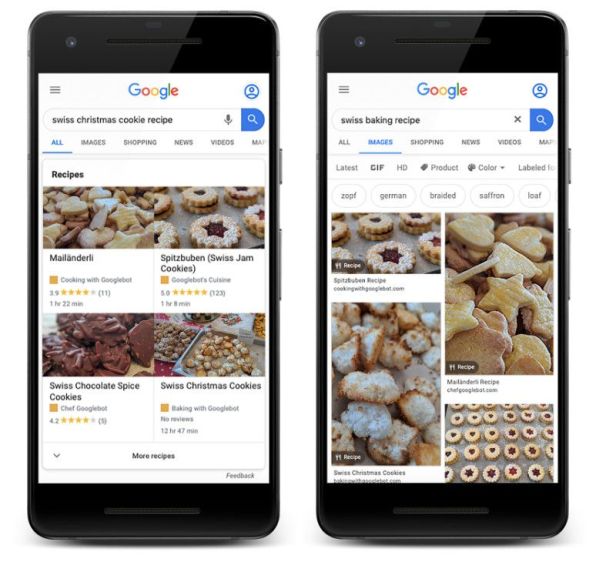
#6. Install the Tasty Pins plugin
Pinterest SEO is important for food and recipe blogs as it is a major traffic driver for food bloggers. The Tasty Pins WordPress plugin helps optimize your blog’s images for Pinterest, SEO, and screen readers.
You can set image descriptions that will perform well in Pinterest searches. Include hashtags, keywords, and whatever else your heart desires.
Over the past few years, Pinterest has introduced many new features that have changed how food bloggers and content creators utilize the platform to get traffic and grow their brands.
From idea pins to video pins to Pinterest TV, there are many great features you can use to promote your food blog content and engage with your audience.
Food Blogger Pro’s Pinterest course has the most up-to-date strategies and tips to help you grow your food blog and get more engagement and traffic on Pinterest.
Why do I need a food blog website?
One risk of relying solely on a YouTube or Instagram channel for your food content is the potential for losing access to your audience. Unlike a food blog website that you own and control, YouTube and Instagram are third-party platforms.
If your account is suspended, or hacked, or the platform experiences changes in algorithms or policies, you could lose your followers and the ability to communicate with them effectively.
This highlights the importance of diversifying your online presence and having a website to complement your social media efforts. Starting a food blog website along with a YouTube and Instagram channel offers several advantages:
- Long-form Content: A food blog website allows you to create in-depth, informative content about recipes, cooking techniques, and food-related topics. It provides a platform for detailed explanations, stories behind the recipes, and engaging content that may not fit into Instagram captions.
- SEO Benefits: Written blog posts can improve your website’s search engine optimization (SEO) by targeting specific keywords related to food and recipes. This can help your content rank higher in search engine results, driving more organic traffic to your site.
- Brand Authority: A well-maintained food blog website can establish you as an authority in the food industry. By sharing your expertise, experiences, and unique perspective, you can build trust with your audience and differentiate yourself from other food influencers.
- Monetization Opportunities: A food blog website offers more diverse monetization options than Instagram alone. You can earn revenue through advertising, sponsored content, affiliate marketing, and selling digital or physical products.
- Cross-Promotion: You can use your food blog website to promote your Instagram channel and vice versa, driving traffic and followers to both platforms. This cross-promotion can help you grow your audience and increase engagement.
- Content Ownership: Unlike social media platforms, where you don’t own your content, a food blog website gives you full control and ownership over your content. You can customize your website’s design, layout, and functionality to suit your brand and goals.
Overall, combining a food blog website with a YouTube and Instagram channel can create a synergistic relationship, allowing you to reach a wider audience, establish your brand, and monetize your passion for food.
How much money does a food blogger make?
The income of a food blogger can vary widely depending on several factors such as the size of their audience, the level of engagement they have, the monetization strategies they use, and their niche within the food blogging world.
Some food bloggers may earn a modest food blogger salary, while others can make a substantial amount depending on the factors above.
According to a survey by Food Blogger Pro, food bloggers with 100,000 or more monthly page views earn an average of $2,000 to $5,000 per month, while those with 1 million or more page views can earn upwards of $20,000 per month.
Income sources for food bloggers can include sponsored content, affiliate marketing, ad revenue, selling products or services, and brand partnerships. Successful food bloggers often diversify their income streams to maximize their earnings.
How to make money as a food blogger
How do food bloggers make money and how much do food bloggers earn? Here’s how to be a successful food blogger and earn a good living:
#1. Learn how to monetize a food blog
Professional food bloggers earn in very similar ways to how bloggers earn money from blogs, and how much they earn depends on their business model.
You can learn how to monetize a food blog and explore numerous ways to make money as a food blogger such as advertising, recipe development, affiliate marketing, and sponsored posts.
It’s important to remember that high-quality web traffic leads to conversions and increased revenue for any business. In this Conversion Rate Optimization course, you’ll learn how to turn a food blog site into a click-driving, sales-generating conversion machine.
Check out the resources below to learn how to make money as a food blogger:
- Strategically Monetizing Your Food Blog [Podcast]
- 3 Strategies to Increase Your Revenue as a Food Blogger
#2. Look for food blogger jobs
One way to make money as a food blogger is to look for food writing or food blogger jobs with food publications or food recipe websites.
Your food blog can serve as a portfolio when you start pitching food-related articles or restaurant reviews and establish yourself as a credible source of culinary information about food, recipes, and cooking.
This list of magazines and websites that pay food writers for writing on food and recipes includes the payment rates and contact information for publishers looking to hire a food blogger to make it easier for you to connect with the right editor.
#3. Build your food blogger brand
As an aspiring food writer, you must not think small because you have a whole world of opportunities available for the taking. There are many examples of food writers who have become famous and well-known celebrities.
For example, before they became co-hosts and judges of MasterChef Australia and Junior MasterChef Australia, Matt Preston was a food critic, food journalist, and recipe writer, and Melissa Leong, was a food writer.
If you build your personal brand and leverage your food blog and YouTube channel the right way, you could go on to write your own cookbook, or even host your own cooking and recipe show.
#4. Write a series of cookbooks
Cookbooks are in high demand on Amazon, and you can build your brand as a professional food blogger and earn a passive income by publishing Kindle books containing just 15+ recipes each.
This Mini Kindle Cookbooks Course will guide you through the entire process of creating your Kindle passive income empire with mini cookbooks that can be written in just a few hours.
Whether you’re a writer, non-writer, good cook, or someone who’s never stepped foot in a kitchen, this course will show you how to earn passive income publishing cookbooks and build a lucrative business without any prior business, writing, or cooking experience.
#5. Work with food brands as an influencer
An Instagram food blogger can work with brands as a food influencer by leveraging their Instagram presence to attract brands, showcasing sponsored content and collaborations that align with their niche and audience.
Here are some tips for food bloggers looking to work with brands:
- Create Quality Content: Brands look for bloggers with high-quality, engaging content that aligns with their brand image. Focus on creating visually appealing posts and recipes that resonate with your audience.
- Build a Strong Brand: Define your niche and brand identity to attract brands that align with your values and content. Showcase your unique style and voice to stand out in a crowded market.
- Grow Your Audience: Brands often look for bloggers with a sizable and engaged audience. Focus on growing your followers organically by posting consistently and engaging with your audience.
- Engage with Brands You Love: Show your interest in working with specific food brands by engaging with their content and tagging them in relevant posts. This can help you get noticed and build relationships with brands.
- Create a Media Kit: A food blogger media kit is essential for showcasing your blog’s statistics, audience demographics, and previous collaborations. Create a professional media kit to share with brands when pitching for collaborations.
- Pitch Your Ideas: Don’t wait for brands to approach you. Take the initiative to pitch your ideas for collaboration. Tailor your pitch to the brand’s needs and showcase how your content can benefit them.
- Be Professional: Maintain a professional approach in your communications with brands. Respond promptly to emails, meet deadlines, and deliver high-quality content to build a positive reputation.
- Disclose Sponsored Content: Be transparent with your audience by clearly disclosing sponsored content. This builds trust with your audience and complies with advertising guidelines.
- Negotiate Fairly: When negotiating terms with brands, ensure that you are compensated fairly for your work. Consider factors such as usage rights, exclusivity, and payment terms.
- Maintain Authenticity: Choose collaborations that align with your brand and values. Maintaining authenticity is key to building trust with your audience and long-term success as a food blogger.
Sponsored posts are an excellent way for bloggers to earn income by collaborating with brands. These posts involve creating content that promotes a brand’s product or service in exchange for compensation.
In the Making Sense of Sponsored Posts course, you’ll learn how to use sponsored posts as a source of blogging income to monetize your food blog while providing valuable exposure to brands.
Learn how to integrate the brand’s message seamlessly into your content, ensuring it resonates with its audience, how to pitch brands successfully by showcasing your unique voice and audience demographics, and demonstrating how a partnership can benefit both parties.
#5. Do food bloggers get free food?
Do food bloggers get free food? Are they even entitled to free food? This is a very divisive topic and one that even food writers don’t always agree on.
While there is a case to be made for why there’s nothing wrong with established food bloggers requesting a free meal, you need to know how and when to make your pitch if you want to get a positive response.
If you plan to start a food review blog, you need to build a strong brand and have a significant audience before you can request complimentary meals at well-known restaurants. Otherwise, you and your pitch will just come across as tacky.
Often restaurants launching a new menu, or businesses promoting a culinary event will invite well-known food bloggers for some much-needed publicity. Once you’re a known brand and have the kind of market reach restaurants look for, they will approach you, not the other way around.
But if you’re just starting a blog, don’t be over-ambitious, and don’t pitch restaurant owners with a sense of entitlement. Start by reviewing small, local establishments, and pay for your food until you have a large audience (and even after you do!).
Pitch local media publications and offer to write restaurant reviews for them. Build cordial relationships with restaurateurs, and give, give, give, before you ask for favors. Let them see the value in collaborating with you first.
What is Food Blogger Pro?
Food Blogger Pro is a membership site created by Lindsay and Bjork Ostrom to show you how to start and grow your food blog so you can turn your passion for food into a thriving food blog and do more of what you love.
Food Blogger Pro helps creative foodies achieve the dream of building a successful food blog and online food business through a community-driven membership and weekly podcast episodes.
Your Food Blogger Pro Membership gives you access to expert training, helpful tutorials, and step-by-step guidance so that there’s less guessing and more intentional action during every phase of the blogging journey.
Get access to a library of over 300 easy-to-understand videos made for beginner to intermediate food bloggers. Join an active community forum where you can get your questions answered and meet some awesome bloggers while you’re at it.
If you want to learn food blogging for beginners, download their Free Food Blogging Starter Kit to set up your new food blog, what blogging tools you’ll need, get food photography tips, and more.
Becoming a successful food blogger or food writer is not as difficult as you might think. With the right approach, focus, and dedication, you can make a name for yourself in the competitive food blogging industry.
Download the free Food Blogging Starter Kit
© 2024, Priya Florence Shah. All rights reserved.
Priya Florence Shah is a bestselling author and an award-winning blogger. Check out her book on emotional self-care for women. Priya writes short stories and poetry and chills with her two-legged and four-legged kids in her spare time.
Discover more from Business & Branding Tips
Subscribe to get the latest posts sent to your email.
